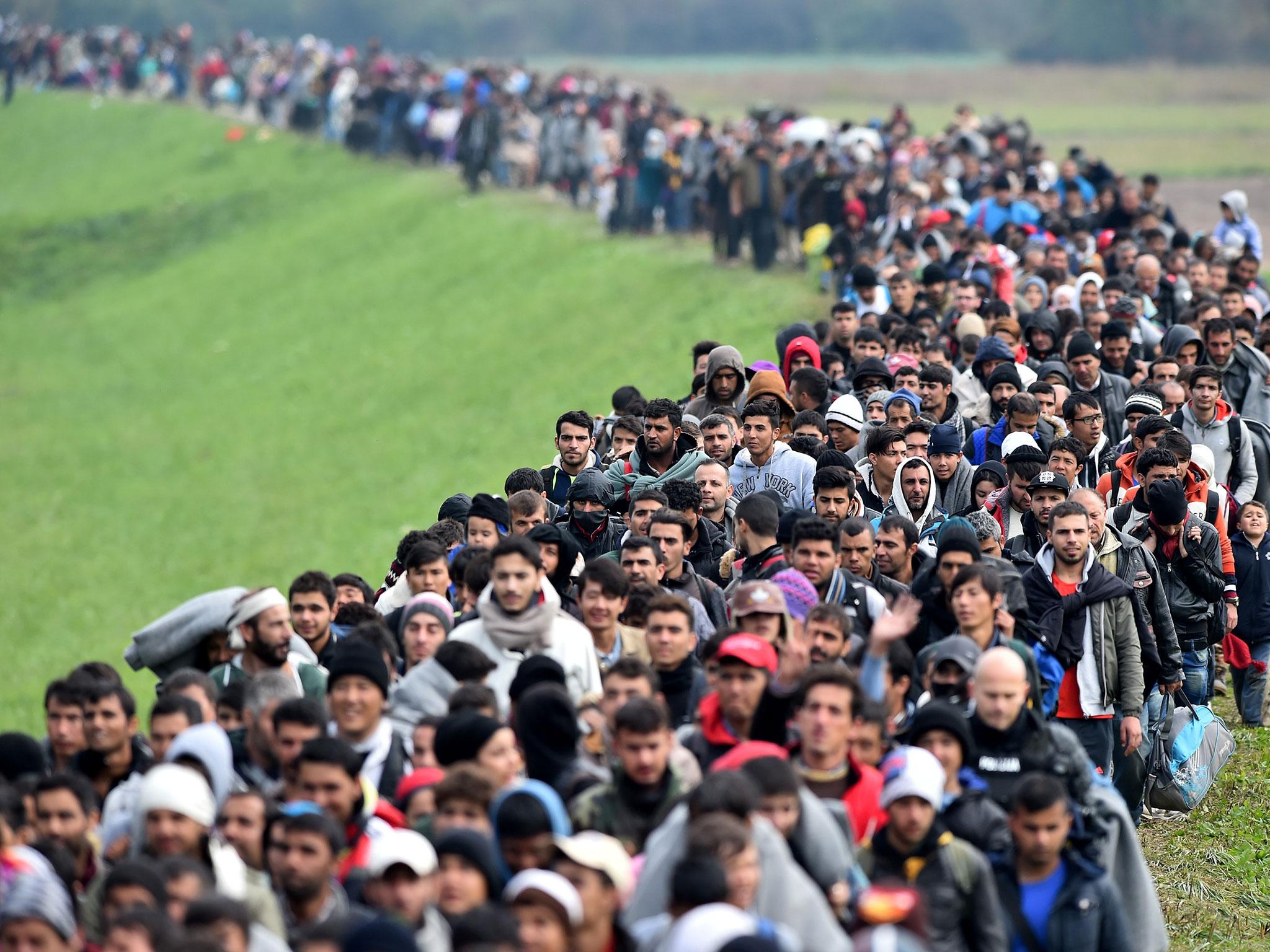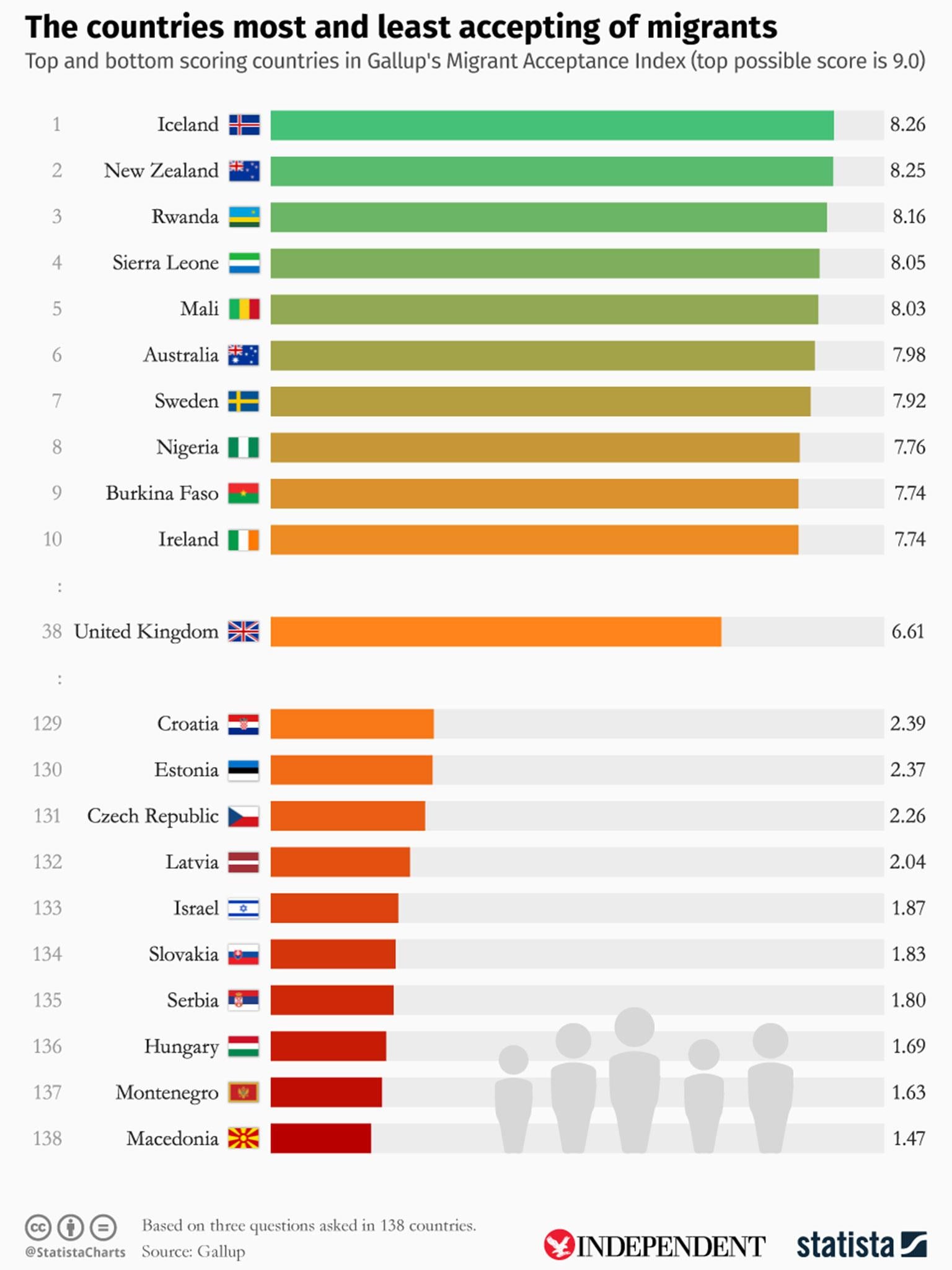World's most and least welcoming countries for migrants
UK comes 38 out of 138 countries

Your support helps us to tell the story
From reproductive rights to climate change to Big Tech, The Independent is on the ground when the story is developing. Whether it's investigating the financials of Elon Musk's pro-Trump PAC or producing our latest documentary, 'The A Word', which shines a light on the American women fighting for reproductive rights, we know how important it is to parse out the facts from the messaging.
At such a critical moment in US history, we need reporters on the ground. Your donation allows us to keep sending journalists to speak to both sides of the story.
The Independent is trusted by Americans across the entire political spectrum. And unlike many other quality news outlets, we choose not to lock Americans out of our reporting and analysis with paywalls. We believe quality journalism should be available to everyone, paid for by those who can afford it.
Your support makes all the difference.Iceland and New Zealand are the most accepting countries for migrants in the world, according to a Gallup poll.
The least accepting countries are Macedonia, Montenegro and Hungary.
The chart below, by Statista, shows the world's most and least welcoming countries for migrants, according to Gallup's Migrant Acceptance Index.

The index grades countries based on whether survey respondents said it was a good or bad thing for immigrants to live in the country, become their neighbour or marry one of their close relatives.
The UK came in at 38th on the list of 138 countries.
Of the 10 countries scoring the lowest, nine were formerly part of the Soviet bloc, and most are located along the Balkan route once travelled by asylum seekers from Greece to Germany.
A majority of people, 54 per cent, said immigrants living in their country was a good while, while half said an immigrant being their neighbour is a good thing, and 44 per cent said an immigrant marrying a close relative is a good thing.
Seventy-seven countries score higher than the world average, while 61 score lower.
Acceptance of migrants was seen to rise with education, with those with at least four years of education after high school or college degrees being the most likely to be accepting.
Younger generations were also found to be more accepting of migrants, along with residents of urban areas.
Subscribe to Independent Premium to bookmark this article
Want to bookmark your favourite articles and stories to read or reference later? Start your Independent Premium subscription today.
Join our commenting forum
Join thought-provoking conversations, follow other Independent readers and see their replies
Comments